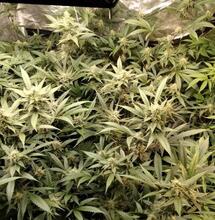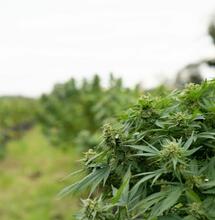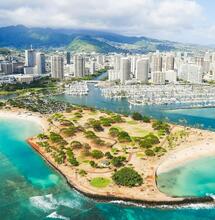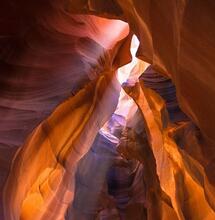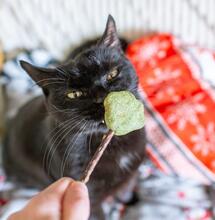Growing Cannabis Seedlings with Mineral Wool
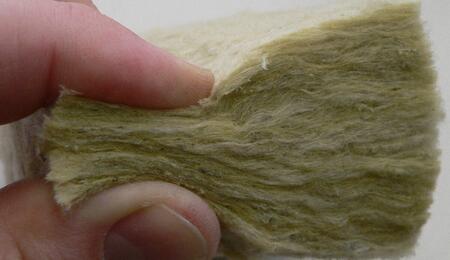
If you are a grower, you’ve probably heard about rock wool or stone wool at some point. But what about slag wool? Slag wool is not so much different from rock wool. The most common use of the two materials is in house soundproofing and insulation. Both are also used in horticulture and can be utilized for cultivating cannabis crops. The main difference is the source material used for manufacture of rock wool and slag wool.
Rock wool and slag wool are both known as “mineral wool” as the two materials are similar in their chemical and physical properties. The main difference is that rock wool is made from natural rocks like basalt, while slag wool is mostly made from iron ore blast furnace slag.
Over the past century, the production of mineral wools has evolved into a large, multi-branched industry, with a plethora of products that contain this useful material being developed. Eventually, mineral wools such as rock wool and slag wool have also found their way into horticulture.
High-quality stone wool and slag wool are fire-resistant materials, and they’re also exquisite hydrophobic materials, which means they persist through excess moist environment.
Rock Wool vs. Slag Wool
Rock wool is made of volcanic rock. It’s a furnace product of molten rock at a temperature of nearly 3000°F, blown with air or steam afterwards. Another production method is spinning the molten rock at ultra-high speed.
Slag wool is manufactured using similar procedures, however, the source material differs. It’s made from blast furnace slag, which is a waste byproduct in steel production. The end result is fine fibers.
The most common use of slag wool is also in insulation, and since more recently it’s been introduced in horticulture. For growers, it’s important to be aware that a portion of the slag wool manufacture comes from waste deposit sites and landfills, which could be contaminated with heavy metals such as lead or chromium.
Contamination of the growing medium with these elements could easily kill cannabis plants, therefore it’s important to look for high-quality rock wool or slag wool.
Most producers control the mineral wool properties during manufacture if their purpose is for horticulture. High-quality mineral wools will be purified from any heavy metals or other contaminants.
Another priority in high-quality stone wool and slag wool production is creating a homogenic starting material which can then be used with gentle plant materials such as clones, seeds, and tissue culture. High homogeneity means equal start conditions for whichever plant part you put on a separate mineral wool plug or block.
Both rock wool and slag wool are also treated with a wetting agent during manufacture. Wetting agents ensure that the material maintains its optimal water-to-air ratio and retains its ability to resist humidity.
What Are the Benefits of Growing with Mineral Wool?
These materials are ideal starters for growing. Both rock wool and slag wool maintain a fluffy and aerated growing medium where the roots have plenty of space to spread. The plants are also able to grow faster during their vegetation phase.
Mineral wools are usually available in a cuboid shape, and each block is very easy to transport into hydroponic or soil-based systems.
Since rock wool and slag wool are man-made materials, they do not contain anything organic inside. This means they are also resistant to mold or fungi.
Stone wool, in particular, can also be used in composting. Strips from rockwool cubes can be added into the compost. You’re basically working with basalt, an element which conditions the soil and supports basic chemical processes for the plants. In addition, basalt rock dust is a superior absorbent of carbon dioxide.
How to Correct pH in Stone Wool Cubes?
Before popping any seed or plant material into a cube, ensure that the pH is correct. Mineral wools are alkaline, which means the pH is above 7. You need to bring that number down to 5.5 so you can properly grow cannabis.
A simple way to optimize the pH is to submerge the cube in a bowl of water where you add a pH-down product. You should keep the cubes in the water until the pH reader shows an acidic reading of 5.5. It takes around 24 hours to correct the pH, where you regularly test the water and re-apply from the pH solution as needed every few hours.
Once the pH reader shows the environment is stable, you can flush the cubes with nutrients and thus give an early boost to your cannabis seedlings. A nutrient mix for growing with mineral wool will have the instructions on how to treat the cubes with it.
When the woolen cubes have the correct pH and are bathed with nutrients, you can plant your cannabis seedlings.
Unfortunately, the cubes are not reusable. It’s recommended that you don’t use the same rock wool or slag wool to start a new seed. The material prevents microbial growth, but leftover organic matter might still contaminate the fiber, so a single cube is good enough for a single plant.
Also read on Soft Secrets:
- A Beginner’s Guide to Hydroponics

